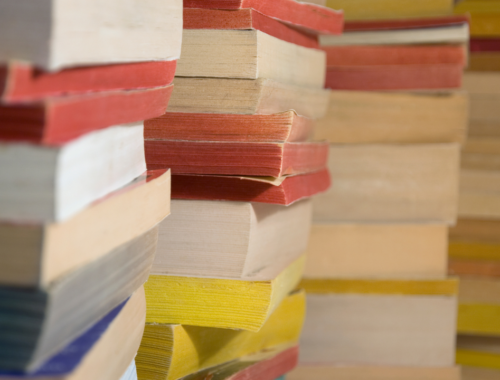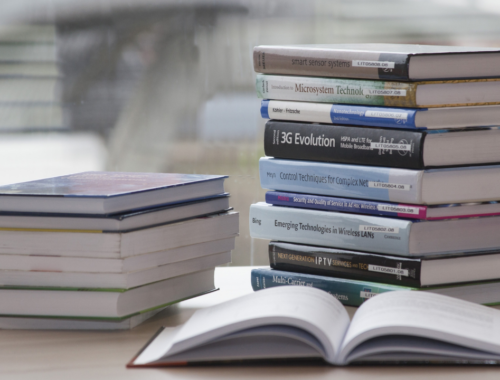
Textbook citations are a relevant topic for all college and grad students and everyone in the academic world. There are many citation styles, but in this guide, we’ll cover the most commonly used ones—MLA, APA, and Chicago. Before handing in your research paper or article, make sure you learn what style is used and expected in your institution.
- How to Cite a Textbook
- How to Cite a Textbook in APA
- How to Cite a Textbook MLA
- How to Cite a Textbook in Chicago Style
- Which Сitation Style Is the Best to Use?
How to Cite a Textbook
When you quote or want to use someone’s ideas, you must cite them to avoid plagiarism. To do it properly, you need to know the rules of citation.
A citation style is a set of guidelines that tells you how to cite sources you use. There are different citation styles, but they are all based on one of the three approaches: parenthetical citations, numerical citations, and note citations.
Most commonly, to cite a textbook, you need
- An in-text citation
- A reference listing with the author’s name, the title, the year of publication, and the publisher.
If you need to cite an edited collection of works by different authors, you should сite relevant chapters and indicate the details of the entire book.
How to Find the Textbook Details
- Author name(s). Look for this info on the front page of the textbook.
- Textbook title. The same here.
- Year published. This information is usually located at the back of the book or on the first few pages. You can use the copyright date as well.
- Edition. This information is usually displayed on the front cover or the first few pages unless the book is the first edition.
- Publisher. Look for this info somewhere close to the year published.
- Pages used. Page numbers are usually located in the corners of the pages.
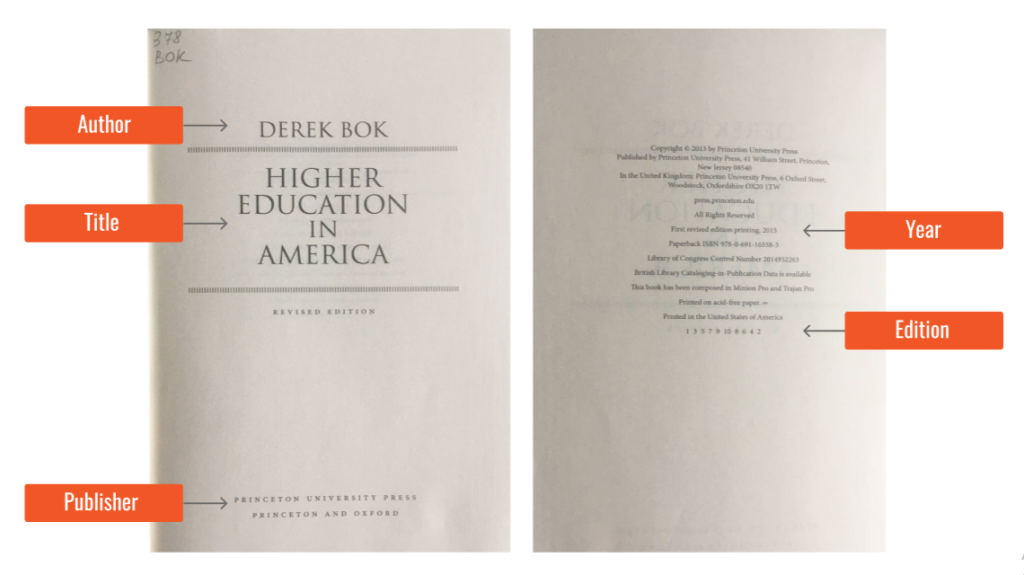
How the textbook citation will look depends on the citation style you are required to use. In this article, we’ll take a look at the most common styles: APA, MLA, and Chicago.
How to Cite a Textbook in APA
What Is APA?
APA is an abbreviation for American Psychological Association, and its citation style was developed in 1952. The association creates and shares psychology-related publications, research, and databases.
Why did the APA style become so popular? Created as a uniform way to structure all psychology research citations, it turned out to be very efficient; therefore, it’s now used in many disciplines aside from psychology.
APA Citation Template
Here is the basic format for a reference list entry of a textbook in the APA style 7th edition:
Author last name, Author first name initial. (Year published). Textbook title (edition, pages used). Publisher.
Here are the examples of the works cited in the APA style:
|
A textbook with one author |
|---|
|
A textbook with two authors In-text citation |
You can cite your resources manually or do it faster using various online citing resources. They all work similarly: you enter the book’s ISBN or title, choose the relevant textbook option from the list offered, and choose the citing style. Here are some of the resources you can use for free:
- Free APA citation generator from Scribbr
- EasyBib Chegg APA citation generator
- BibGuru citation generator
Here is an example of a textbook citation in APA style from Scribbr:
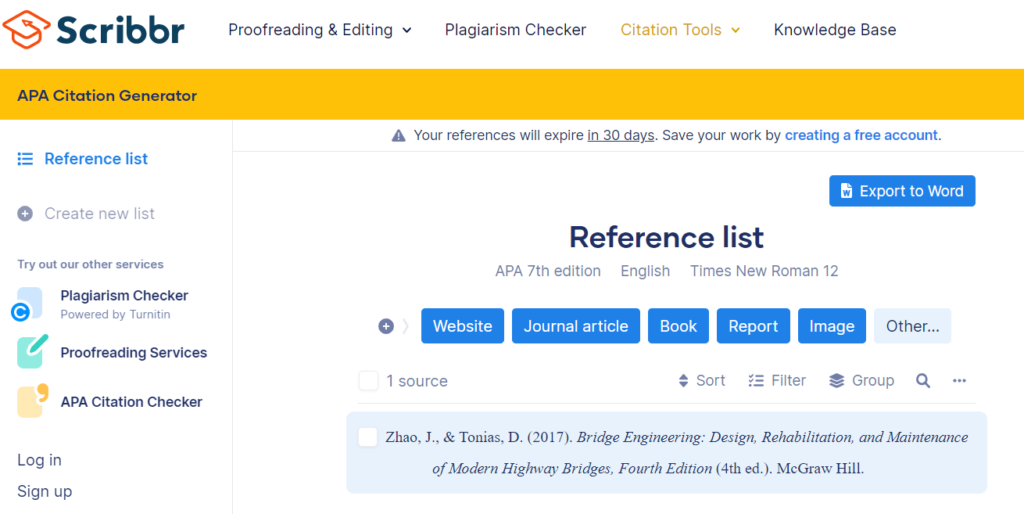
How to Cite a Textbook in APA 7th Edition
The APA 7th edition is the most recent Publication Manual of the American Psychological Association and is one of the most frequently used style guides for academic writing. You can find the Publication Manual on their official website.
You can also find more information on how to cite a textbook in APA 7th edition on the Purdue University Online Writing Lab website.
How to Cite a Textbook MLA
What Is MLA?
The MLA format was developed by the Modern Language Association to help researchers, students, and scholars edit their academic papers quickly.
Initially designed for literature and language academic fields, it is now broadly used everywhere. The most recent MLA Handbook (9th edition) was released in April 2021. You can also find more information on how to cite a textbook in MLA on the Purdue University Online Writing Lab website.
MLA Citation Template
Here is the basic format for a reference list entry of a textbook in the MLA style 8th edition:
Author(s) name. Title of the book. Edition number ed., Publisher, Year of publication.
Here are the examples of the works cited in the MLA style:
|
A textbook with one author |
|---|
|
A textbook with two authors In-text citation |
We also recommend using various online citing resources such as
- Free MLA citation generator from Scribbr
- EasyBib Chegg MLA citation generator
- BibGuru citation generator
Here is an example from BibGuru:
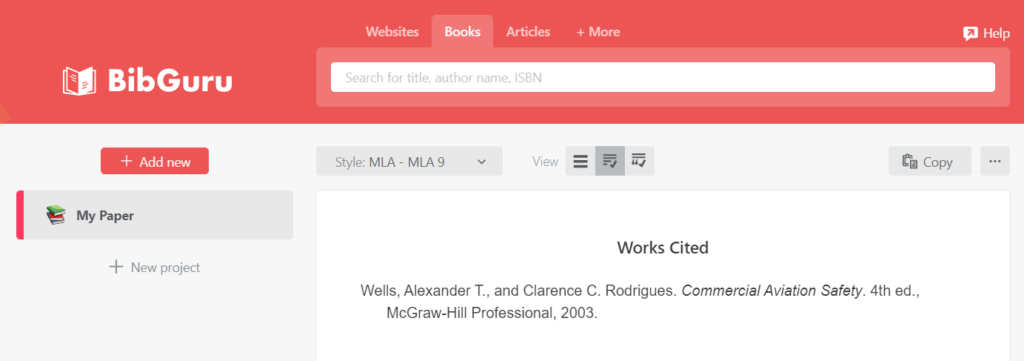
How to Cite a Textbook in Chicago Style
What Is Chicago Style?
The Chicago Manual of Style (CMOS) is used by those working in the fields of literature, history, and arts.
The 17th edition is the most recent edition of CMOS, with examples for the general format of research papers, footnotes/endnotes, and the bibliography.
You can also find more information on how to cite a textbook in the Chicago style on the Purdue University Online Writing Lab website.
Chicago Citation Template
There are two basic systems in the Chicago style:
- Notes-Bibliography System consists of footnotes or endnotes (or both) and a bibliography.
- Author-Date System consists of parenthetical author-date citations and a reference list with complete publication information.
Here are the examples of the works cited in the Chicago style:
Notes-Bibliography System
| A bibliography entry | Billington, David P. The Tower and the Bridge: The New Art of Structural Engineering. Princeton, NJ: Princeton University Press, 1985. |
|---|---|
| Footnote | David P. Billington, The Tower and the Bridge: The New Art of Structural Engineering. (Princeton, NJ: Princeton University Press, 1985), 73. |
| Shortened note | Billington, The Tower and the Bridge, 73. |
Author-Date System
| A reference entry | Billington, David P. 1985. The Tower and the Bridge: The New Art of Structural Engineering. Princeton, NJ: Princeton University Press. |
|---|---|
| In-text citation | (Billington 1985, 70) |
Footnote examples from the book:
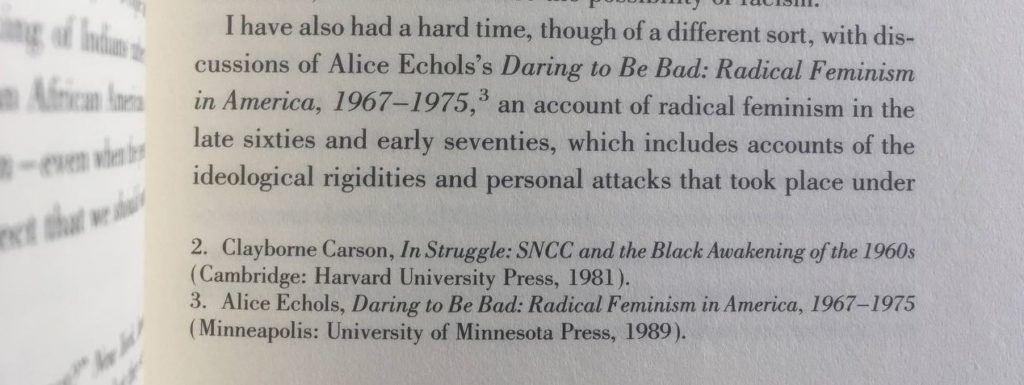
To make your work easier and faster, you can use the following online citing resources:
Here is an example from BibGuru with the Chicago Author-Date system:
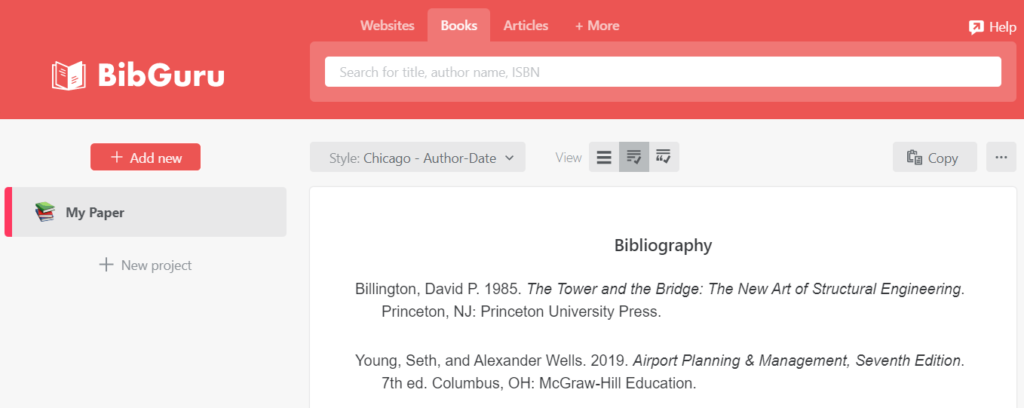
Which Сitation Style Is the Best to Use?
Each college and university has guidelines regarding the citation style recommended for students to use in their works. So there is no such thing as the best style; you just need to know what is expected from you and edit your citations accordingly.
- APA style is one of the most popular styles now widely used in many academic fields. Since it was developed by the American Psychological Association, it’s a norm in the social and behavioral sciences.
- MLA style comes as the second most popular style, and it’s widely used in the humanities.
- Chicago style can be expected both in the humanities and the sciences (depending on the system used).
- Bluebook and OSCOLA are usually used for law.
- There are other specialized styles as well.
Final Thoughts
Now that you know more about citation styles, we hope you’ll be able to cite the textbooks for your academic writing easily.

